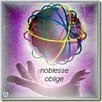.
.
In the news today on CNN's website there was a story about a very old, old man who passed away yesterday at the age of 110. Frank Buckles was the last remaining living American veteran from World War One. Born in February 1901, he enlisted at the age of 16, lying about his age to military recruiters. According to the internet, there are still two WWI veterans alive today, one in England, and the other in Australia, 109 and 110 respectively. Seems amazing that anyone can live that long, and even more amazing, the history they witnessed in their lifetime, practically the entire twentieth century. Rest in peace, Mr. Buckles.
.
At the same WWI site we visited recently, reported on in the post just a couple back, about a walk in the woods, this headless stone angel was trying to break free from the block of rock which emprisoned her, to break free and fly, like the soul of an old veteran who has finally shrugged off his mortal coil.
.
.
.
.
.
Here is another angle on the stone sphynx which graced that surprisingly poignant place.
.
.
.
.
.
In the same quarried out chamber where the stone altar was, depicted in the earlier post, was a bas relief soldier who'd set down his pack and rifle.
.
.
.
.
.
Just a few kilometers away from the sculpture garden quarry site deep in the woods, in the small Picardy village of Plessiers de Roye, there stand the ruins of a chateau which was destroyed in the Spring offensive of 1918, and was never razed nor rebuilt. Stones left standing in mute testament to the horrors of warfare.
.
.
.
.
.
Every wall of that once lovely place was pockmarked with bullet and shell scars.
.
.
.
.
.
In the town's cemetery a tombstone for a WWI victim bore a first name I'd never seen before anywhere . . . "Elisée". Like "les Champs Elysées".
.
.
.
.
.
Just up the road from the ruined chateau, there is another stone quarry site, also used for a troop shelter in WWI, as the sign on the battered down heavy wood doors attests. This quarry goes much deeper and farther underground than the site where the sphynx was. Only a short way from the entrance one find's oneself in complete pitch black darkness. Best to bring good lights.
.
.
.
.
.
Hundreds of yards up one of the underground quarry tunnels there is an altar carved into the stone wall, not unlike the one at the other site. There may be some war victims buried somewhere in the quarry galleries, as this plaque on the wall would seem to confirm. The fading writing says : "Here rests Eugene Blondet, Aspirant in the 162nd Infantery Regiment, Died for France on 10 June 1916, Age 19 years old.
.
.
.
.
.
This is the altar deep in an underground cavern of the "Carrière Mallet", or Mallet Quarry.
.
.
.
.
.
The rustic Christ on the altar's cross is rather fascinating, with large hands and hair in the breeze.
.
.
.
.
.
One of the few sources of information (in French) I could find about the Carrière Mallet contained this postcard image from the war, when the quarry was used not only as a shelter but also as a field medical station.
.
.
.
.
.
We visited the quarry that day with Peter (of Peter's Paris renown), while in the dark of the tunnels he shot this photo of me. Thanks Peter for your excellent company !
.
.
.
.
.







































